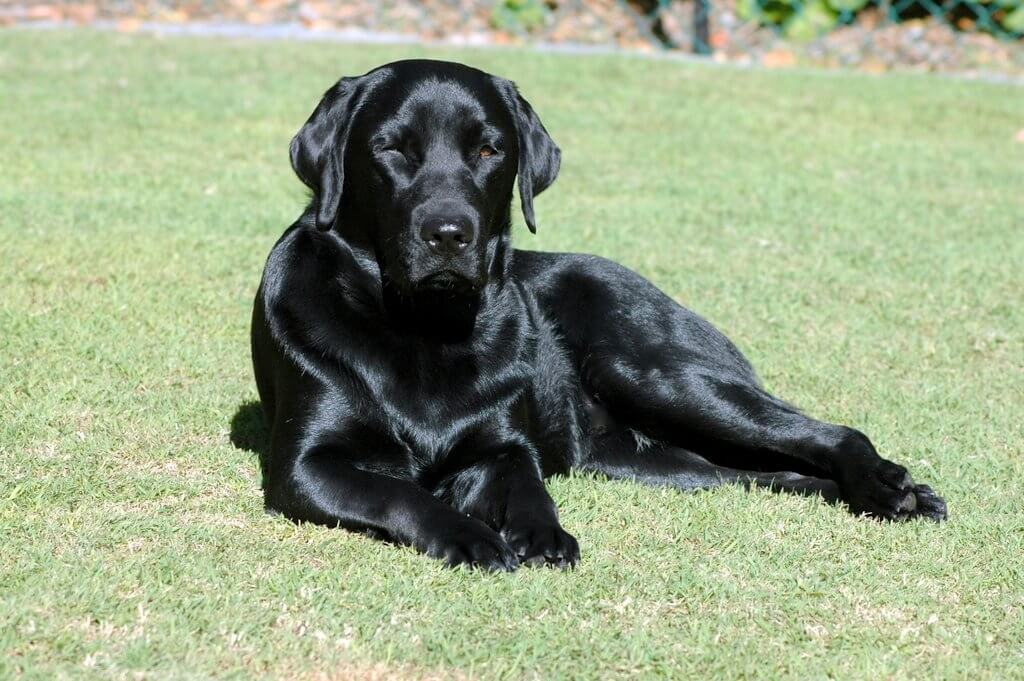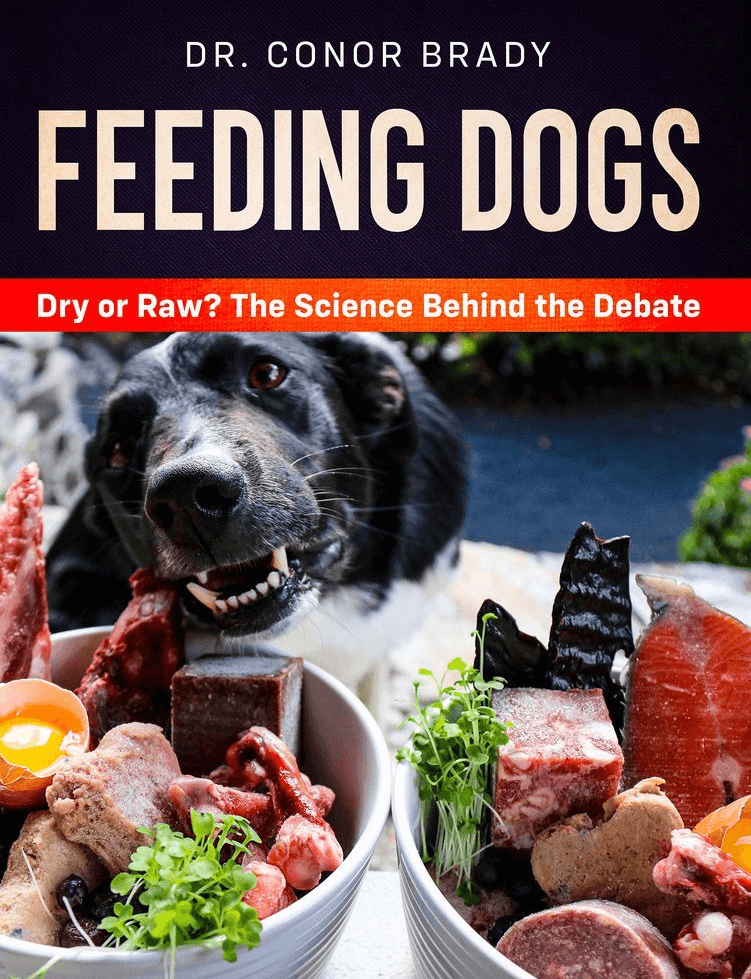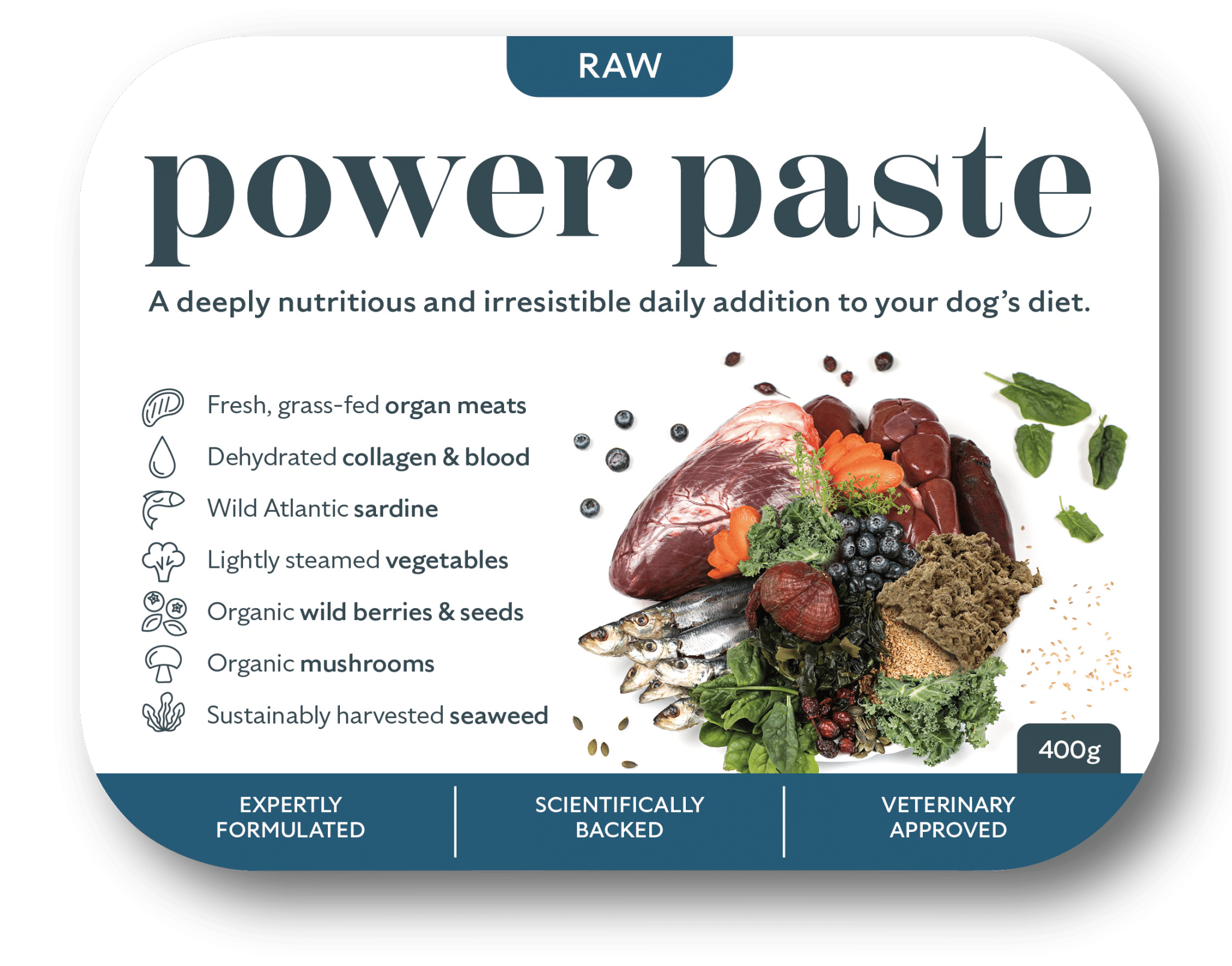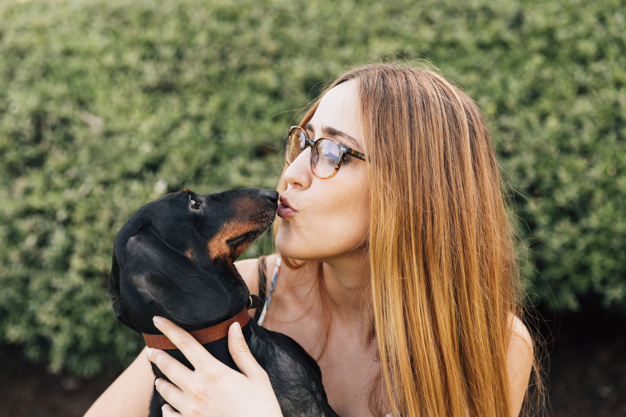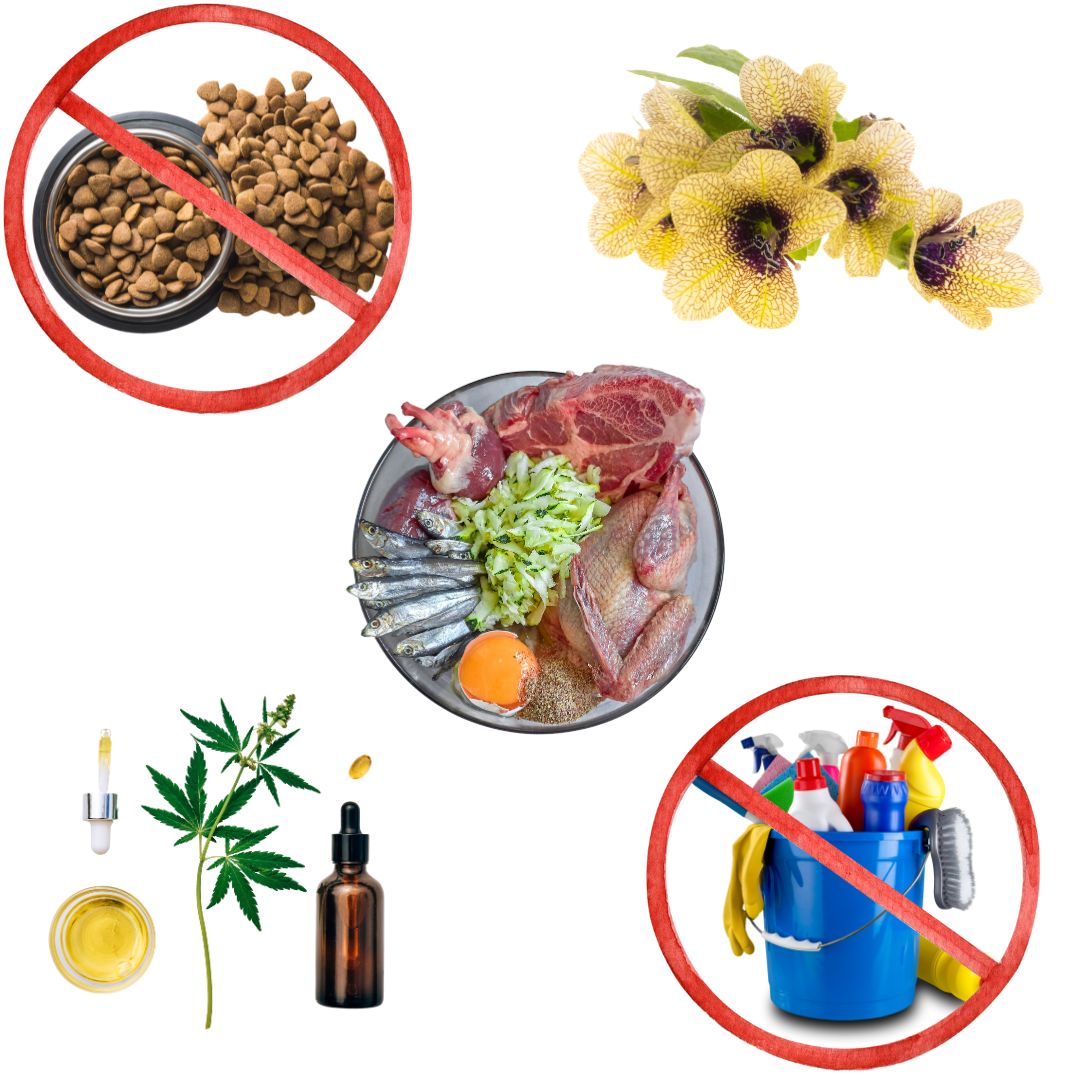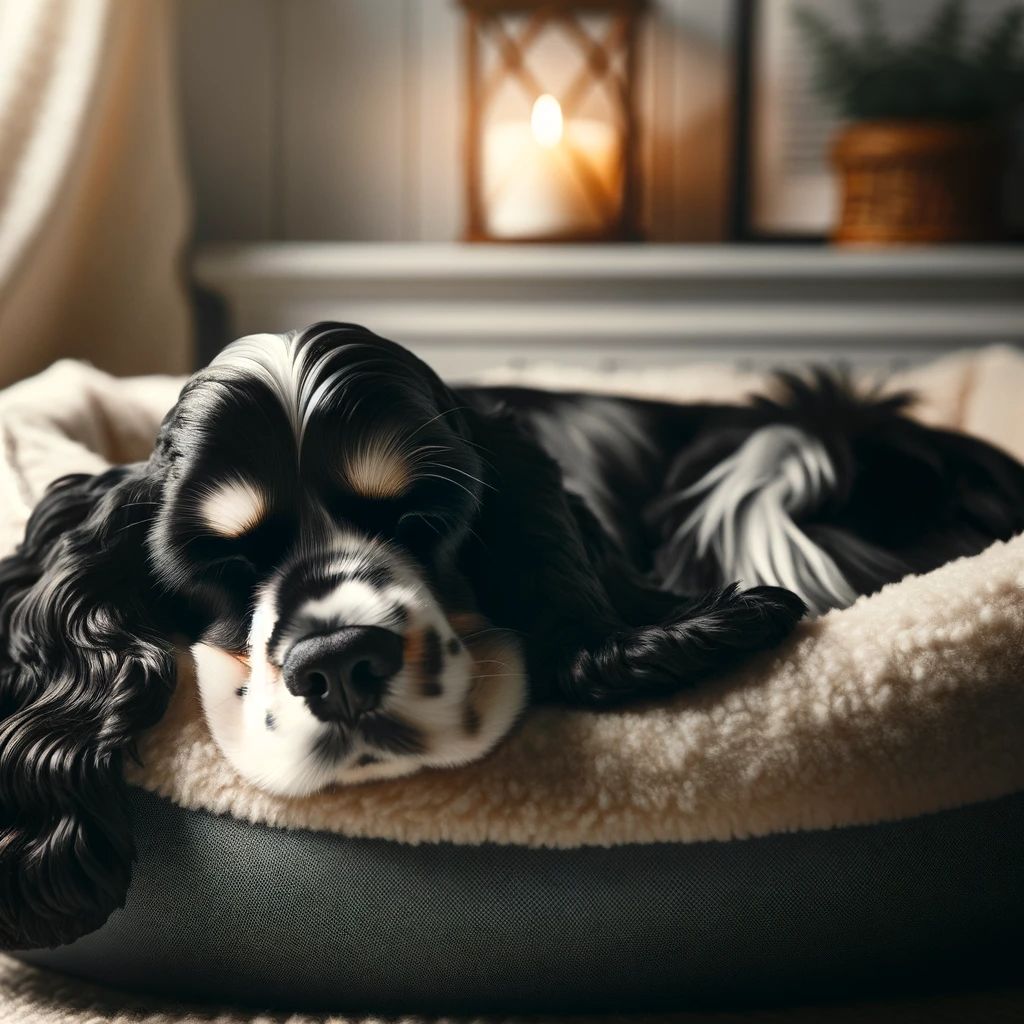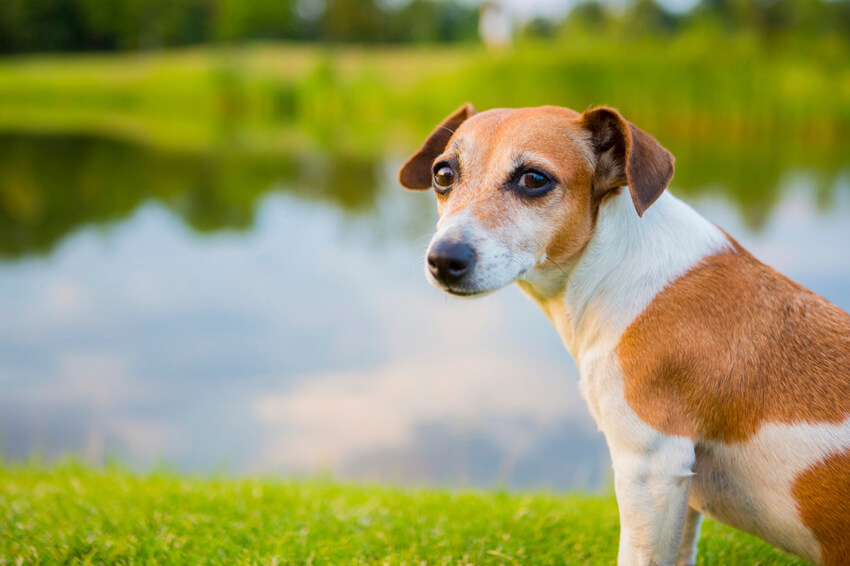How to get Better Coat Condition in Dogs…
The below is not a photo-shopped dog. This is what a black Labrador can look like given the right nutrition. Beautiful eh? The key to better coat condition in dogs is absolutely all about the diet.
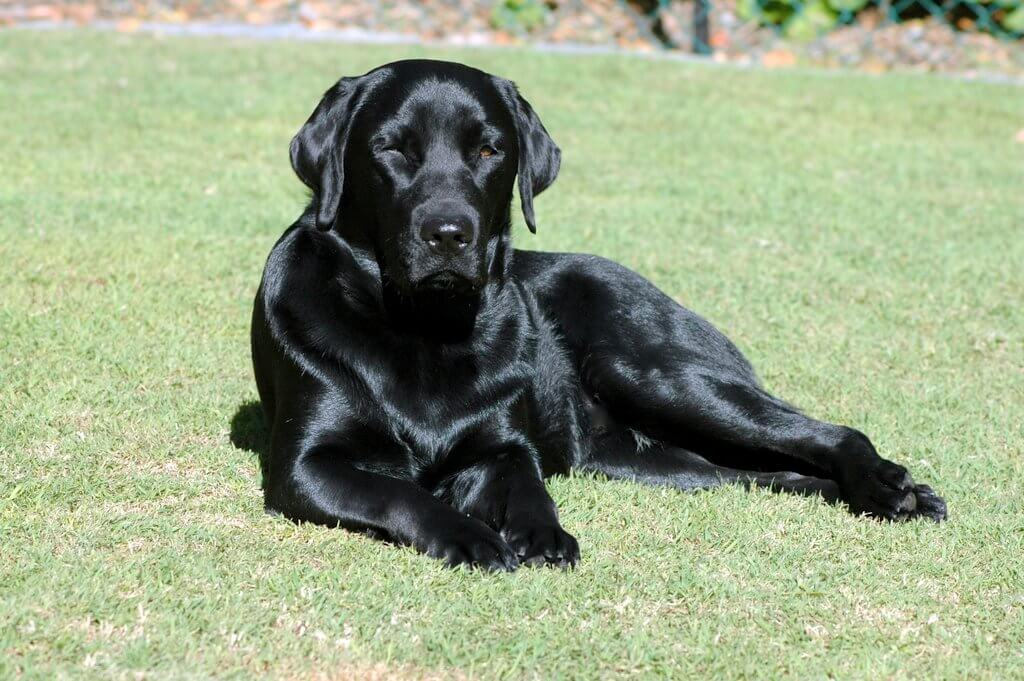
We all want a good coat but excluding perhaps the groomers, we are all a little confused as to what constitutes a really good coat and how to get one.
First, it’s important to note that all dogs are obviously different. Some dogs have big, full, soft coats, like a golden retriever. Other breeds can be a bit more wirey (such as the lovely wire haired terrier pictured). Some have short hair (Dobes), others have long (English Sheepdogs). Even within a breed there are differences depending on many factors. A golden retriever neutered before adulthood will tend to have a rougher, woollier coat (termed “spay” coat), a result of removing the all-important growth hormones from the process, something we at Dogs First strongly recommend against.
Second, we must understand the organ that is growing your dog’s hair, that is their skin. The skin is the largest organ of the body. It protects us from the outside. It also regulates our body temperature so it’s full of blood vessels. It’s constantly regenerating itself. The hefty majority of the dust in your house is dead skin cells! Thus the skin is metabolically highly active and it comes as no surprise that its demands of the body are large, up to 30% of the protein your dog consumes goes into maintaining your dog’s skin and coat each day (Buffington 1987, Scott 1990)! Subtle changes in its nutrient supply can have a marked effect on skin and coat condition.
With this in mind here are the top 5 considerations for a good coat:
1. Good Quality Protein
The more protein you eat and the better quality it is the better your skin and coat will be. Simple. In this respect, if you chose a dry food product made with 50% carbs (structurally useless) and the legal minimum 20% protein (where most dry foods reside) of extremely poor quality, you can expect a poorer coat. That 20% protein, more often than not, comprises of cheap, indigestible “beet-pulp” or “corn-gluten” and a token amount of meat meal, meal being the grey powder produced by rendering plants. Meat meal is not a good quality ingredient. It is highly processed meat waste, often made in a land far, far away. Needless to say, this is not high-quality protein.
When you feed a token amount of poor quality protein to your dog their system must be choosy of where to use it, should it throw it all into a nice coat or keep the brain and organs maintained? Certainly the latter. After that, it might worry about the endocrine system (hormones), blood, bones etc. Waaay down the list is good looking hair!
There is no comparison between a fresh diet for a good coat. If you feed your dog a biologically appropriate diet of meat, bone and maybe a little veg their diet will be very high in protein (60%), with good quality fresh fat (30%) and a little carbs. Now the body is free to be a bit more generous with its protein reserves, the skin will be fuelled and like a well-fed pot plant, hair will grow better. And a raw egg now and again, full of the freshest, most absorbable protein out there!
If you’re buying a pre-made raw dog food, I like Paleo Ridge. Ethical, organic, all for the same price as the others. Really good stuff. If you’re in Britain you can pick up Paleo Ridge here. For folk on the island of Ireland you can find it at storganics.ie.
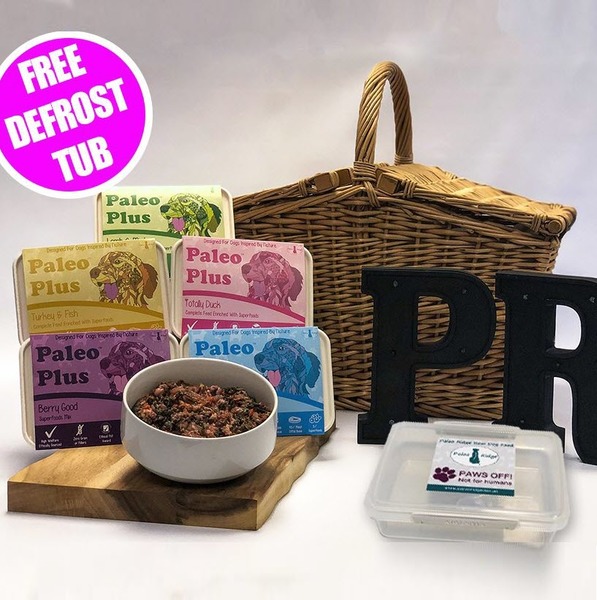
2. Good Quality Fats
Everyone loves a sleek coat on their dog. However, sleekness is not the most accurate measure of coat health. Adding corn oil to your dog’s diet can and will increase the “sleekness” of your dog’s coat but it won’t stop it falling out or looking sparse. You must feed the right protein, as above, but also the right oils.
Essential Fatty Acids (EFA’s), specifically Poly-Unsaturated ones (PUFAs), regulate epidermal proliferation and are absolutely critical to happy skin. When these aren’t present, you get dry, flaky skin.

The most famous PUFAs are omega 3 and linoleic acid (a type of omega 6). Unfortunately, PUFA’s are a sensitive bunch. Like water to gremlins, light / air / heat alters them and turns them nasty. That’s why you should treat these oils with care. Eat them as fresh as you can. All the PUFA’s your dog needs will be provided by a good raw dog food diet. For dogs, this might mean feeding whole sardines, from frozen. Truly excellent food for dogs. Chicen fat too is full of good fats. Duck fat is arguably better than chicken fat being higher in the awesome linoleic acid.
Tips on buying fish oil capsules
- Don’t buy anything with a picture of a dog on it is variably a rip off. The human type are fine.
- The cheap stuff is padded out with cheap plant oil, so cheaper is certainly not better here.
- Salmon oil will work and is popular but I don’t personally use it. Numbers of the wild type are completely decimated. The farms are not only incredibly destructive to the environment but go heavy on chemicals which accumulate in….fish fat.
- Cod liver oil is better (though again this is not so sustainable) though this too comes with a lot of unnecessary filler ingredients.
- The best source of omega 3’s currently are the”enhanced” or refined fish oil capsule from smaller oily fish, something like Arazo concentrated fish oil capsules. You get a lot of omega 3 bang for your buck. These one cost around $0.30 per capsule.
- Another option is krill oil. Folk worry about the whales but that grossly misunderstands how much of this stuff there is out there. It works out around $0.30 per capsule but is not as high as the Arazo product.
- Some folk recommend phytoplankton but I don’t, it is high in DHA but not EPA. You need both.
3. Think Zinc
Like protein, zinc is one of those things that seems to be vital to everything. plays crucial roles in the biosynthesis of fatty acids, it plays key roles in inflammation and the immune response, and it is particularly important in the rapidly dividing cells of the body, hence it plays a crucial role in your epidermis. It’s why all the cosmetic and medicinal creams contain it, and why eating foods rich in zinc (fresh bones) will benefit your dog enormously. The availability of zinc from dry food is expected to be extremely poor for three reasons:
Zinc is included in a difficult to absorb form (zinc oxide) which is cheap, unlike it’s more absorbable form (chelated zinc) where it is bound to a protein, allowing it easier entry to the gut.
Most dry foods contain wheat and wheat contains gluten. The majority of dogs are expected to be gluten intolerant and this results in the malabsorption of zinc in the small intestine.
Wheat contains phytic acid which binds to zinc when cooked up together, reducing it’s availability to the animal (just one of the reasons there’s no such thing as a “complete” meal – the interaction of components).
A zinc deficiency will materialise as a rough dry coat, alopecia or a reddening of the skin. The skin will be dry and scaly. Your dog will develop elbow crusts which most people believe are from lying on “hard ground”. Just rub a little almond oil on that dry skin and give them a bone to chew. They’ll be hairy in two weeks! Doesn’t work with human foreheads, sadly. In studies, dry fed dogs supplemented with a combination of zinc and linoleic acid showed a significant improvement in coat gloss and coat scale when compared to the control group of dogs receiving the standard diet (Marsh et al. 2000).
Other than that you can supply your dog with added zinc by adding a nut or seed oil to their food (recommend raw, organic coconut oil), half a teaspoon per 20kg fine, or pumpkin seed oil (will also fight worms in dogs) or simply by feeding them a tooth-brushing meaty bone now and again. Full of zinc, copper, magnesium and all the other precious bits often missing from a dog’s diet.

4. Hairy Vitamins and Herbs
Vitamins A, B and E are vital to hair growth. Vitamin B complex plays a role in the metabolism of fats, proteins and carbohydrates. Vitamin E, as well as being your bodies greatest anti-oxidant, holds your cell membranes together. In short a deficiency results in scaly skin and hair loss. Hofmann La Rodue (1995, cited in Hand et al. (2003) Small Animal Clinical Nutrition) tested the effects of processing and six months of storage on the vitamin content of dry food. Vitamins B complex fell between 32 and 58% over six months. Vitamin E fell by 30%. This starves a coat of nutrition. Then you open the bag and leave it rotting in the cupboard for a month where further destruction kicks in and your fats turn nasty. This is very anti-coat stuff.

If you want to a vitamin boost to your dog’s diet why not try a little sustainably harvested Irish kelp for dogs. We are clearly massive supporters here of using seaweed in dogs, and most benefits go beyond simply vitamins and minerals. It’s an excellent daily supplement for both dry and raw fed dogs and used extensively by breeders worldwide. Our seaweed is sustainably picked off the Irish coast of Ireland.
Another popular herb that might boost coat condition in dogs is horsetail. Heard of it? It grows in all our ditches. Find it on Amazon. It has a good compliment of vitamins but more importantly, it contains silica which hair absolutely ADORES!!! It’s used by all the show dog folk pre show but I’d include it a lot more than that, why be good to them just before a show?
5. Lots of Brushing, Less of Washing…

The epidermis (the outer-most layers of skin) is responsible for the hair follicle from which your hair sprouts. It supplies the hair follicle with the protein it needs to build the hair. It supplies the sebaceous glands with the protein and fatty acids necessary to lubricate and ultimately maintain the hair. This lubrication allows the hairs to better flow over each other better, providing better protection and heat retention (and hence all the hairs point the same way). Regular brushing stimulates this lubrication as well as removing old dead hair. Also, you can keep an eye to see if any baddies are residing. Strongly recommend a good brush or trip to local groomer. Love groomers.
Take it easy on the baths too. Why is your dog smelly? They’re not supposed to be. Don’t human products when washing them. They take off all that vital hair oil. The more you wash them the dryer they look. Choose as natural a product as you can find on the market and don’t wash too often. An oatmeal bath is a great idea. Not only soothes skin but as it’s full of vitamin E the coat and skin get a feeding!
In Conclusion…
Good coats require lots of protein, not the minimum each day. Just like our own skin, their skin needs fresh fatty acids, not the old stuff. Wheat based dry food is expected to have a much lower availability of zinc than is written on the side of the bag due to the presence of wheat and phytic acid. Lastly, dry food is proven to be deficient in the vitamins vital for hair maintenance.
In short, if it’s good skin and coat you’re after, a dry, processed diet is the last place to start.
REFERENCES
Buffington, C. A. (1987). Nutrition and the skin. Proceedings of the 11th KalKan Symposium: 11–16
Scott, D. W. (1990). The biology of hair growth and its disturbances. In: von Tscharner, C., Halliwell, R. E. W. (eds.) Advances in Veterinary Dermatology. Volume 1. London: Baillière Tindall. pp. 3–33.

